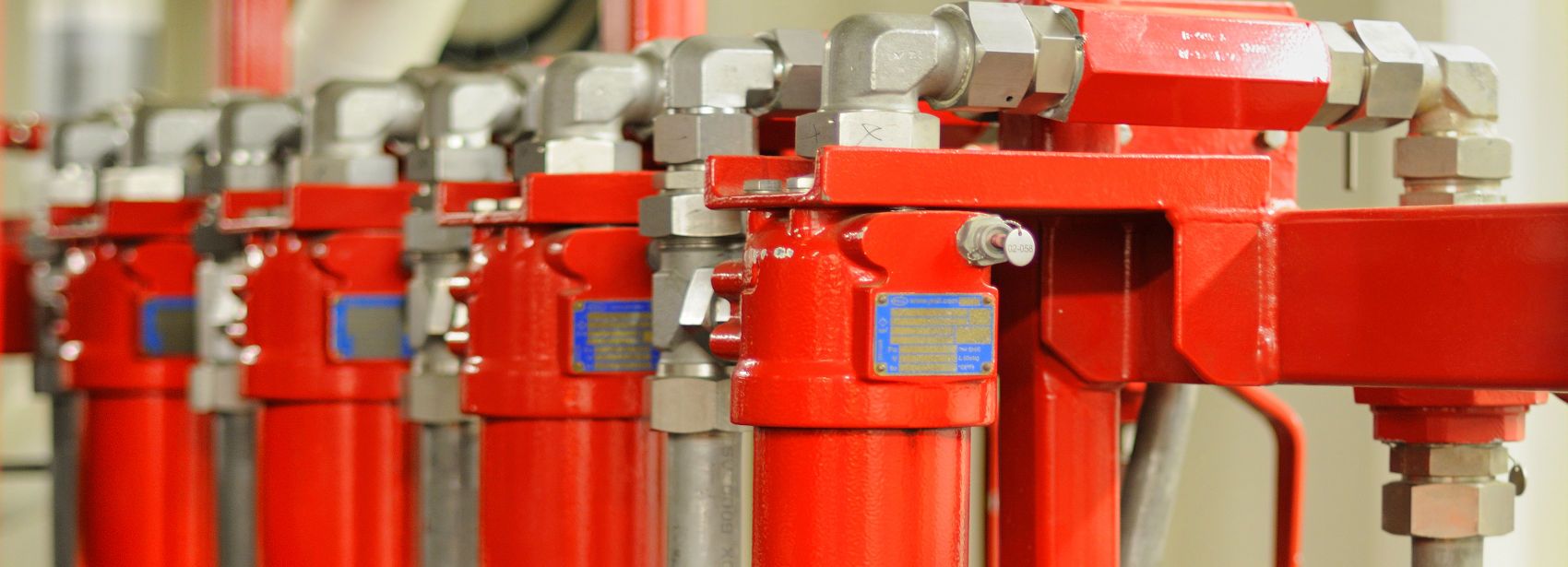
Filter efficiency is the most important but not the only factor involved when evaluating the filter design. A filter can be ineffective if it is installed in the wrong place and if it is given the wrong job. When creating a filtration concept, some fundamental rules play a crucial role. For example, the function of a hydraulic filter is always to reduce wear which means it should filter to a finer level than the critical tolerances. Filters should be used with the highest possible flow rate. Suitable seals on cylinders and on breather filters should prevent contamination from entering the system.
Therefore, we can distinguish between protective filters and working filters.
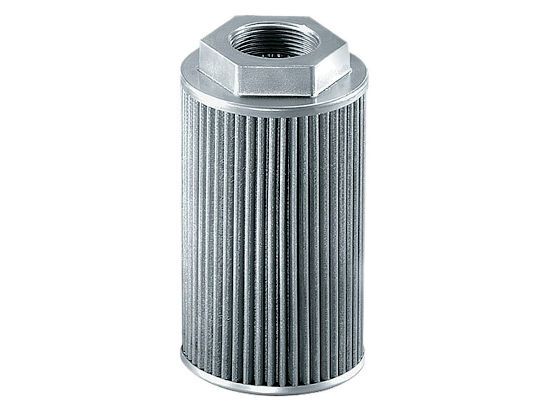
These filters are installed between the tank and the booster pump to protect the pump from coarse contamination which can cause a high level of wear in the pump. They can be installed inline, at the intake port in the tank or below the tank. To prevent hazardous operating conditions for the pump, we recommend using a vacuum gauge between the filter and pump. Due to the risk of pump cavitation, relatively coarse filter materials with a filtration rating of > 25 µm are used.
For this reason, suction filters are not suitable for ensuring the component protection necessary for the economical operation of the system.
To view our range of suction strainers, click here.
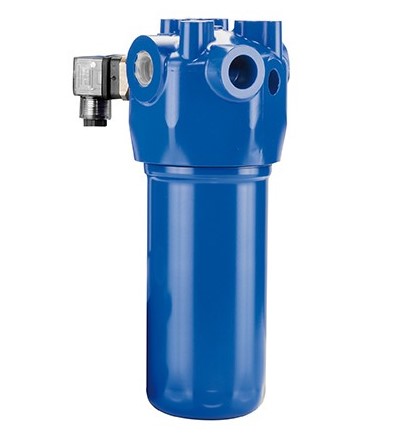
This type of filter is defined in the DIN 24550 standard as an inline filter designed for a specific nominal pressure. It can be installed before or after the boost pump, but also in the return line between components and tank. Wherever the filter is installed, the housing must be sized in accordance with the system pressure, the pressure pulsations, and the flow rate. To enhance the reliability of the whole hydraulic and lubrication system, filter housings are designed to have high fatigue strength. The filter housings are flow-optimized to be able to achieve a low pressure drop and a compact, space saving design. They therefore make a significant contribution to the economy of the whole system.
On mobile machines which comply with the latest regulations, the space-saving housing concept offers considerable advantages. To reduce the risk of unwanted leaks from the inline filter during operation, these can be integrated into a cost-optimized hydraulic or lubrication module. To protect particularly sensitive components, such as servo and proportional valves, we recommend installing this type of filter immediately before the component. However, the high dynamics in the control circuits must be considered in this case. Inline filters which are fitted with filter elements where the flow is from out to in, should preferably be installed in systems which have high pressure pulsations and where the filter housing has no bypass valve.
To view our range of pressure filters, click here.
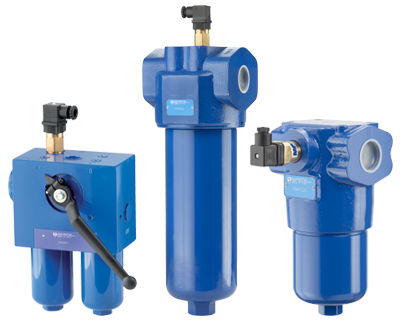
This type of filter can either be installed CONTROL inline (in the hydraulic tank line) or as a tank-mounted filter (on top of the hydraulic tank). To prevent dangerous malfunctions in hydraulic components because of excessive backpressure in the return line, return line filters are usually fitted with a bypass valve.
For systems which are operated around the clock, the filter housing must be of the change-over type so that the system does not need to be shut down for filter maintenance. So that the oil flow is not interrupted during the change-over process, causing under supply to the lubrication points, the change-over valve is designed with negative overlap. When selecting the correct filter size, the maximum possible flow rate must be considered. This corresponds to the area ratio of piston to piston minus the rod of hydraulic cylinders and can be greater than the flow rate generated by the pumps. To prevent possible foaming of the fluid in the tank, make sure that the fluid outlet from the filter is always below the fluid level in all operating conditions. It may be necessary to fit a pipe or flow rate diffuser in the filter outlet. It is important that the distance between the floor of the tank and the end of the pipe is no less than two to three times the pipe diameter. Return line filters can be fitted with breather filters as additional equipment.
To view our range of return line filters, click here.
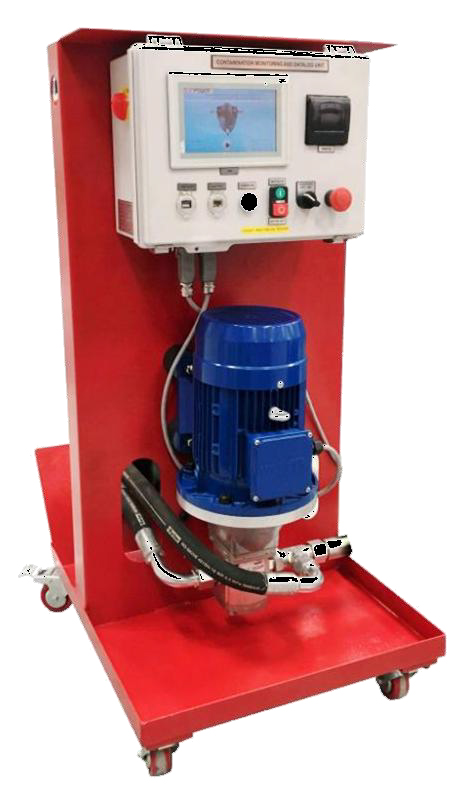
In hydraulic systems with heavy loads, additional offline filters are used increasingly to avoid the accumulation of fine particles. In contrast to main filters, only part of the whole flow in the system is filtered by offline filters. Excellent oil cleanliness levels can be achieved through continual filtration, regardless of the operating cycle of the machine. In addition, the main filters are relieved, meaning that element changing intervals can be extended. Offline filter systems should be used in addition to main filters. In this case the main filter should be sized as a protective filter, i.e., filtering less finely and without a bypass valve.
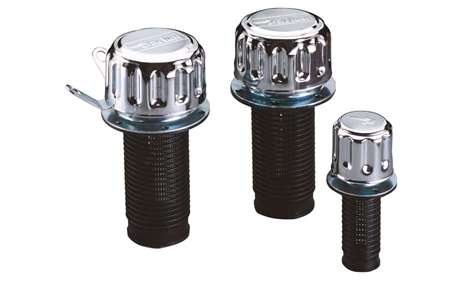
Tank breather filters are one of the most CONTROL important, yet neglected, components in filter design. As a result of changes in temperature and of using cylinders or accumulators, the oil level in the tanks of hydraulic and lubrication systems is subject to constant fluctuations. The resulting pressure differential to the ambient is equalized by an exchange of air which means contamination can get into the tanks. Breather filters can prevent contamination from entering. Ideally the breathers should be of at least the same filtration rating as the system filter in the hydraulic circuit. By using breather filters with double check valves, the air exchange between the tank and the ambient can be significantly reduced, minimizing the amount of contamination and dust entering the tank and increasing the service life of the breather filter. Where there are high temperature changes and high humidity, water also enters the tank.
To view our range of breathers, click here.
Vat Reg Number: 846644204 Company Registration Number: 5230249
© Copyright 2025 Zeus Hydratech | All Rights Reserved